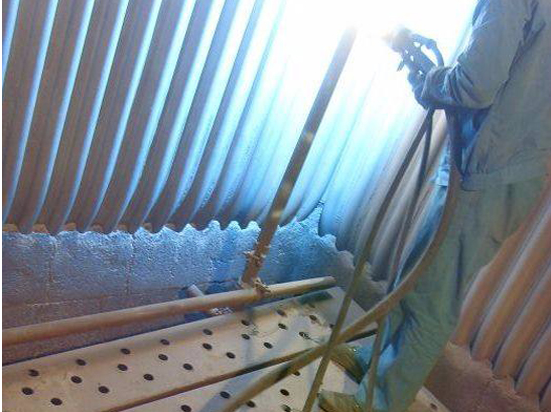

1) The heating conditions of the workpiece are different
Without the spraying and remelting process, the surface temperature of the workpiece can always be controlled below 250 °C, and generally it will not deform or change the original structure of the workpiece. It is beneficial to spray welding repair of complex shapes, thin walls, long axes and some important parts of workpieces. If the powder layer is melted by spraying, the remelting and sintering temperature of the workpiece can reach more than 900 ℃, which is prone to stress and deformation. Most of the workpieces will be annealed, which is not safe for annealing.
2) The bonding state with the substrate surface is different.
The bonding with the surface of the sprayed substrate is mainly mechanical occlusion, and there is also micro-welding, and the bonding strength is not high, generally 20 MPa-65 MPa. Spray welding is metallurgical bonding by melting the powder layer and the surface of the substrate, and the bonding strength can generally reach 343 MPa - 441 MPa.
3) Use different powders
The powder used for spraying must be self-fluxing alloy powder, and the powder used for spraying is not limited.
4) Different spray layer structures
The sprayed layer is uniform and dense, and is generally considered to have no pores, while the sprayed layer has certain pores.

5) The bearing performance is different.
The spray coating cannot withstand impact loads and high contact stress, and is suitable for various surface contact fits. The melt-blown layer has strong bonding strength, can withstand impact loads, can be used in line contact and other occasions, and can withstand high contact stress.
When the workpiece is subjected to heavy loads, especially impact loads, the coating is required to have high bonding strength, or the workpiece is used in corrosive media, or when the coating is dense, spray melting should be used.
When the dimensional accuracy of the workpiece is very high, it is not allowed to deform or change its original quenched structure, and these workpieces do not bear impact load or only bear a slight impact load, and the bonding strength requirements are not very high, the method of spraying should be used.
Most of the peeling of the coating from the substrate occurs during processing and use. Considering the spraying process, the main reasons for spalling are:
1. Remove oxides, oil stains, rust spots, dust and moisture on the surface of the workpiece;
2. The preheating temperature of the workpiece is insufficient;
3. The bottom layer is too thin and is not firmly combined with the workpiece substrate;
4. The coating is too thick and uneven, resulting in large internal stress in the coating. When the internal stress of the coating exceeds the strength of the coating itself, the coating will crack;
5. In the sprayed inner hole, the cooling shrinkage of the coating can easily lead to spalling, so spray as thinly as possible to reduce the shrinkage during cooling. In addition, cooling too quickly after spraying can also cause the coating to peel.
Arc spraying is a technology that uses arc combustion between two continuously fed welding wires to melt metal, atomizes the molten metal with high-speed airflow, and accelerates the atomized metal particles to spray onto the workpiece to form a coating. Arc spraying is a thermal spraying method commonly used in practical engineering, such as anticorrosion, wear resistance of steel structures and maintenance of mechanical parts. The arc spraying system generally consists of a special power supply for spraying, a control device, an arc spray gun, a wire feeder and a compressed air supply system.
Hot information

